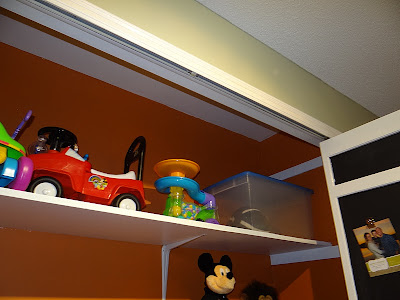Let me start by saying that these types of fans are meant to be installed before a ceiling even goes into a space, so if you already have a ceiling in, and you don’t have access to an attic space directly above your fan, think twice about trying to replace that bad boy, because it’s going to be tricky. And by tricky I mean it sucks. Big time.
Unfortunately we didn’t have a choice. Not only was the housing yellowing with time, but the fan made a noise like a pair of maracas in an mariachi band. All of this maybe I could have tried to fix without removing it, but the biggest problem with this guy is that there was no duct work attached to it. As in, it was venting condensation and air into the space between the bathroom ceiling and the floor of the kitchen. Genius, right? Thankfully, we discovered this only by luck when we had to rip open the bathroom ceiling to replace the frozen plumbing before we bought the house.
Let me back up and give you the short version. We put an offer on the house, waited 7 months to hear back from the bank, finally we got approval and went in for the inspection, all the pipes had frozen while we were waiting and burst, our bank wouldn’t give us a mortgage without working plumbing, the bank that owned the house wouldn’t fix it, and we couldn’t legally fix it because we didn’t own it. So we may have accidentally let ourselves in to the vacant house and accidentally fixed the plumbing anyway. And to the surprise of our mortgage company, all the plumbing was fixed when they sent their appraiser over. Shh- don’t tell anybody. :)
So back to the story at hand, when Super Dad
These fans are usually attached to the rafters, or to a set of suspension braces in-between rafters. Which means the only way to get to the screws to remove it is to cut a larger opening in the ceiling. (Unless you have access through an attic, you lucky dog.)
And to add insult to injury, the builders tapped this guy in with nails instead of screws, so cue about 30 minutes of prying and cursing trying to get this clunky piece of garabage out of the ceiling.
Once it was out, I first worked on running through the new duct work. Luckily, my furnace room is right next to my bathroom, so I only had to get the duct work through the ceiling over into the furnace room, and then I could vent it out to the exterior of my house from there. Here’s my 4” wide flexible ducting, I needed a 25’ piece.
I used a fish tape to pull the duct work through my hole into the furnace room. It’s basically just a long, flexible metal stick that you can unrole as much as you need. We purchased ours back in The Bungalow when we were running speaker wire through the walls.
Once I had the duct work run, I could attach my wires and put my new fan housing into the ceiling. I probably should have cut back more of the ceiling to do so, but I didn’t want to have all that patch work, so instead I bent my arm around inside the ceiling like Gumby trying to screw my fan into the ceiling joists. Screws this time. Take note 1980’s contractors- screws.
Then I just had to cut a piece of sheet rock to place back into my newly created hole in the ceiling. I forgot to snap a photo before I put the first round of mud and tape on it, but you get the idea.
Eventually that big patch will be covered up and seamless, but unfortunately I have a few more steps before then. Here’s a closer look at that before ceiling with the messy patch left over from the plumbing incident.
First I'll have to tell you all about fixing the ceiling, and then I can finish putting the rest of the light together. Rome wasn't built overnight, and this bathroom won't take a DIY 30 minute episode. But everyday we inch a little closer. And luckily we have a warm, heated, automatic toilet to sit on in the mean time.























































